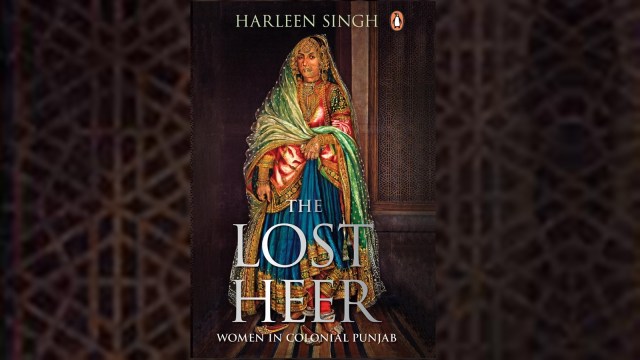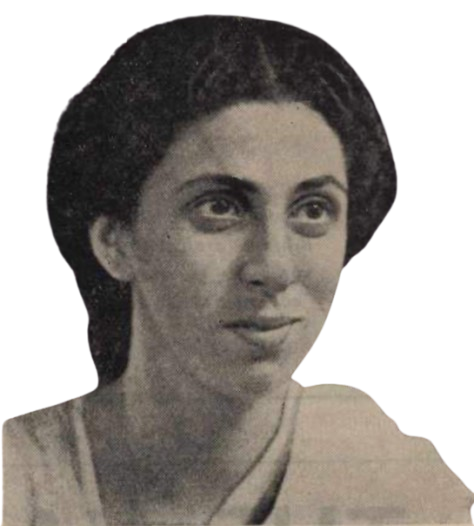Over nine decades ago, when young Bhagat Singh was hanged to death by the British during India’s freedom struggle, another revolution was sweeping the streets of undivided Punjab — led by its women. Young girls and women across Punjab had begun singing ghori (folk song sung by women when their brothers get ready for marriage). But this ghori, written by Tahir, a tongawallah, in Bhagat Singh’s memory, described “death as his bride”:

(O sisters, let us sing the ghori, now that the wedding procession is ready. Our Sardar Bhagat Singh is going to marry his bride: Death).
Story continues below this ad
 Cover of first women’s magazine “Bharat Bhagini”
Cover of first women’s magazine “Bharat Bhagini”
Over seven decades after India attained freedom from the British, with Punjab being hailed as “sword arm of India”, what dominates people’s memories are the stories of masculinity — how the freedom struggle was fought and won by men, etc. However, the colonial Punjab from the eyes of the women exploited, silenced, and kept behind the veils remained undocumented.
The Lost Heer – Women in Colonial Punjab, a latest book by Canada-based Harleen Singh and published by Penguin, is an effort to see colonial Punjab from women-centric narratives that are largely missing in the available literature. Women featured as daughters of sardars, wives of kings, mothers of statesmen, and widows of emperors — their personality revolving around men whose honour and pride they were upholding.
 Woman with charkha: “A 1920s autochrome, early color photograph, of a woman on a charkha outside her home in Kapurthala, Punjab”
Woman with charkha: “A 1920s autochrome, early color photograph, of a woman on a charkha outside her home in Kapurthala, Punjab”
From Ratan Devi, a widow tied to the Jallianwala Bagh massacre, who spent the night inside the bagh with the body of her husband amidst countless other corpses; to Perin Bharucha, Parsi woman from Lahore who joined socialist women’s movement in the 1930s and led relief efforts during Bengal famine; and Hardevi Roshanlal, who started colonial Punjab’s first women’s magazine ‘Bharat Bhagini’ — this book is a treasure trove for those who wish to see colonial Punjab from the eyes of the women.
Speaking to The Indian Express, 29-year-old author Harleen Singh, a native of New Delhi, said he moved to Canada as a student in 2013, completed his engineering from the University of Windsor, but later developed interest in research on colonial Punjab’s social history.
Story continues below this ad
 Women walking with veils: “Female worshippers at the Golden Temple, Amritsar, 1905”
Women walking with veils: “Female worshippers at the Golden Temple, Amritsar, 1905”
Harleen said women in the colonial Punjab, who were largely confined behind purdah in those days, had taken to streets in the country’s freedom struggle but had played several other roles in igniting that flame for freedom, but justice wasn’t done in documenting their struggles. “…Women in thousands had taken to streets to protest against the Jallianwala Bagh massacre, but it is hardly spoken about,” Harleen, who had started work on the project around eight years ago, said.
 Perin Bharucha, the Parsi girl from Lahore
Perin Bharucha, the Parsi girl from Lahore
On how women were physically and emotionally exploited in colonial Punjab, Harleen said: “The practice was informally called badanfaroshi, a term for illegal human trafficking. There existed a proper market in Punjab where women were bought and sold… But then several movements during the colonial period such as Arya Samaj, Brahmo Samaj, Ahmadiyaa movement, Singh Sabha Lehar etc, made women aware of their rights, education, and with the rise of religious feminism, they became more aware and started coming out of their veils.”
Who made a difference
The book encapsulates the stories of colonial period women from different walks of life — both the privileged and underprivileged — who experienced and lived through the British Raj. From figures like Aas Kaur, Mai Fatto, and Bibi Sahib Kaur in the early colonial period, to Manmohini Zutshi and Raghbir Kaur, to completely forgotten figures like Dr Premdevi (probably the first qualified lady doctor of Punjab), and Khadija Begum Ferozeuddin (the ‘first Punjabi lady MA’), the book “focuses on a section of society who have not received their due,” Harleen said.
“We have women like Hardevi Roshanlal, one among the few Punjabi women who went to London in the 1880s, came back to Lahore and wrote a travelogue ‘Meri London Yatra’. She went to London with a veil and returned without it. She then started the colonial period’s first women’s magazine ‘Bharat Bhagini’,” he said.
Story continues below this ad
 Image of women with a bicycle: “Female students of Kinnaird College, Lahore, Punjab’s premier college in the 1930s”
Image of women with a bicycle: “Female students of Kinnaird College, Lahore, Punjab’s premier college in the 1930s”
“We all know Ghadar revolutionaries Kartar Singh Sarabha and Sohan Singh Bhakna, but how many of us really know Ghulab Kaur, the firebrand woman, Ghadarite, who travelled all the way from abroad, defying her husband’s order to participate in the freedom struggle. The British called her ‘letter box of sedition’ as she created a network of like-minded volunteers who wanted to fight for freedom… Women across religions — Hindus, Muslims, Sikhs — were behind veils those days in Punjab, but with time, those purdahs came off.”
The book cover
On the book cover is a ‘native lady of Umritsar’ (Amritsar), heavily dressed in traditional attire and ornaments, a portrait possibly painted by German-British artist Horace van Ruith in the 1880s. “The painting was commissioned by the Municipality of Amritsar in the 1880s and later lent to the Colonial and Indian Exhibition in London in 1886. It displayed Punjab’s artistic heritage, highlighting the region’s intricate textiles and jewellery… Layering style was common among Punjab’s Hindu and Sikh women… Draped over her head and shoulders is a sheer dupatta… through which one can glimpse the pearls dangling from her paranda (hair accessory) and a pair of intricately embroidered khussa or jutti (Punjabi shoes) rests on the floor. She stands next to an exquisitely carved wooden jaali, a fine example of Amritsari craftsmanship in the 19th-century Punjab,” read an excerpt from the book, defining the cover painting. The painting was later acquired by Victoria and Albert Museum, London, where it remains testament to Punjab’s artistic heritage.
 Ghadrite Ghulab Kaur
Ghadrite Ghulab Kaur
The book title
Over the 500-page book, the title finds mention of Heer, a well-known rebel of 15th Century Punjab, who had dared to confess her love for Ranjha when women did not have a voice. She was poisoned to death for the same. “Heer has always represented the spirit of Punjabi women — a rebel. Every woman in Punjab has lived with that fighting spirit, but their names were lost in time. The book’s title is an ode to those lost Heer’s whom we have tried to find again,” Harleen said.



 Cover of first women’s magazine “Bharat Bhagini”
Cover of first women’s magazine “Bharat Bhagini” Woman with charkha: “A 1920s autochrome, early color photograph, of a woman on a charkha outside her home in Kapurthala, Punjab”
Woman with charkha: “A 1920s autochrome, early color photograph, of a woman on a charkha outside her home in Kapurthala, Punjab” Women walking with veils: “Female worshippers at the Golden Temple, Amritsar, 1905”
Women walking with veils: “Female worshippers at the Golden Temple, Amritsar, 1905” Perin Bharucha, the Parsi girl from Lahore
Perin Bharucha, the Parsi girl from Lahore Image of women with a bicycle: “Female students of Kinnaird College, Lahore, Punjab’s premier college in the 1930s”
Image of women with a bicycle: “Female students of Kinnaird College, Lahore, Punjab’s premier college in the 1930s” Ghadrite Ghulab Kaur
Ghadrite Ghulab Kaur





